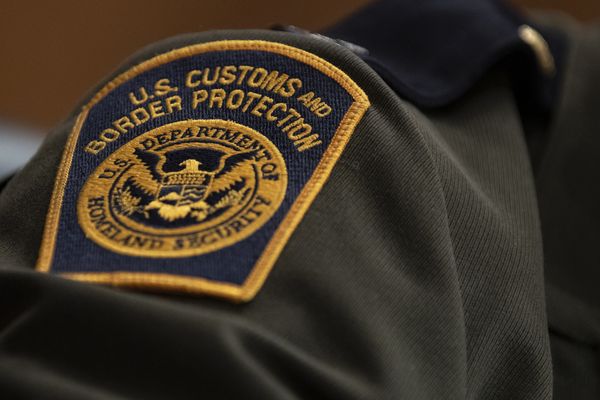
As the world reels from the first three weeks of Donald Trump’s shakedown diplomacy, it is divided between those who marvel at this display of raw American economic hegemony, and those who fear that the US’s president, fatally misreading how the globe has changed since his first term, is storing up trouble that will diminish the US as an economic and moral force in four years’ time.
At one level Trump’s antics are wearily familiar. After all, the last rites of the 70-year-old liberal world order were also read when Trump came to power in 2017, before that order was briefly disinterred under Joe Biden. The diplomatic pearls were collectively clutched when Trump 1.0 threatened to pull out of Nato, launched a trade war with China, introduced a travel ban on mainly Muslim countries, and withdrew from the Trans-Pacific Partnership, the 12-nation trade agreement championed by Barack Obama. In 2019, Trump dropped the threat of a 5% tariff in return for Mexico sending 6,000 militarised police to the southern border. Grievances, and bargains, have always animated Trump’s thinking.
But Trump 2.0 has new elements. Last time, he used the threat and imposition of tariffs to extract trade concessions from both China and the European Union, but not as a first and ubiquitous weapon of choice to bolster all his diplomatic dealings.
So far, Canada, Mexico, Colombia, China and possibly the EU and Denmark, have faced the threat – or reality – of tariffs. Panama has been warned of a US invasion and Canada of annexation. The UK stands nervously mute in the shadows, hoping not to catch the president’s attention.
Trump’s friends will claim that last week’s tariff threats delivered quick wins. Colombia caved on migrants. Panama has agreed not to renew its involvement in the Belt and Road pact with China. Both Canada and Mexico made concessions to secure a delay to 25% tariffs until further talks, due to be completed by 4 March. In the meantime, Mexico will reinforce the border with 10,000 extra troops. Two working parties will be set up into drugs and into the border. Canada will appoint a “fentanyl tsar”, and commit C$200m to fresh intelligence gathering on cartels.
Meanwhile, Nato’s secretary general, Mark Rutte, is thanking Trump for raising the importance of Greenland’s security, and the threat posed by Russia in the Arctic. China may be in talks before Monday that could cede control of TikTok, its social network that is popular in the US and elsewhere in the west. Ukraine has offered the US rare minerals if the US will continue its aid. Everything in diplomacy, it seems, has a price.
But is shakedown diplomacy the optimal way for the US to secure its national interest, or could he achieve his goals by not forcing the world permanently to live at one minute to midnight? The Mexican president, Claudia Sheinbaum, had already adopted a tougher policy against the drug cartels. By Trump claiming she is in a conspiracy with the drug lords, the objective of cooperation between the two countries becomes harder.
Trump has also hardly won new friends in Canada. Doug Ford, the centre-right Ontario premier, was filmed saying on Monday: “Election day, was I happy this guy won? One hundred per cent I was. But then the guy pulled out the knife and fucking yanked it into us. We’re supposed to be his closest allies, his closest friend. It’s terrible.”
US presidents have of course crudely threatened other powers in the past, using economic leverage to do so. The whole modern-day architecture of sanctions and the deployment of the dollar has become an institutionalised means of applying long-term economic leverage to change the behaviour of others. The first shock and awe sanctions against Russia after the invasion of Crimea in 2013 were intended by the White House to make the rouble reel, and in the end they failed.
But sanctions are a war of attrition. Trump’s shakedown diplomacy glories in high-profile, winner-take-all confrontations.
Implicit in the Trump approach is of course a rejection of the whole notion of alliances, or that the US has ideological goals that it shares with other nations. American presidents since the founding fathers, Henry Kissinger wrote a decade ago, “have always implied whilst other nations had selfish interests, America had principles and destiny”. From Roosevelt to Wilson to Kennedy, the US adopted the role as conscience to the world, and then its policeman.
In Trump’s rhetoric, by contrast, there is no pretence the US is acting for the greater good of the world – in wielding the threat of tariffs there is no defence even of the world trade order, or of free markets. All that ideological superstructure is stripped out. This is purely about leveraging economic strength to secure American interests – whether it be to cut migration, the flow of drugs or boosting American jobs and factories. A few buttressing arguments are made such as the unfairness of Chinese trade practices, or stolen US patents, but these issues are for the US to unilaterally to declare and act upon, not any independent arbitral body.
The danger for Trump is threefold. Beating up the smaller guy in the room like Mexico does not impress. Taking on China or the EU is different. As the French president, Emmanuel Macron, has said: “If our commercial interests are attacked, Europe, as a true power, will have to make itself respected and therefore react.” Few economists see winners in trade wars between superpowers.
Secondly, as other middle income nations grow in economic strength, they may veer towards the Chinese camp as the safest, most stable course. The more the US cuts its soft power assets such as USAid the more likely alienation is.
Thirdly, the madman theory as a means of keeping an adversary guessing has limits, as Roseanne McManus recently pointed out in Foreign Affairs.
In 1968, Richard Nixon told his chief of staff, HR Haldeman, “I want the North Vietnamese to believe that I’ve reached the point that I might do anything to stop the war.” Nixon suggested that his advisers could “slip the word” to the North Vietnamese that “we can’t restrain him when he’s angry – and he has his hand on the nuclear button”. Shortly after entering office, Nixon and Kissinger, his national security adviser, attempted to do just that. Following Kissinger’s instructions while visiting Moscow, the White House adviser Leonard Garment told Soviet officials that Nixon was “a dramatically disjointed personality” who was “capable of barbaric cruelty”, “more than a little paranoid”, and “predictably unpredictable”.
In the end Kissinger had to admit that the gambit failed. Vietnam would not surrender, at any price.







